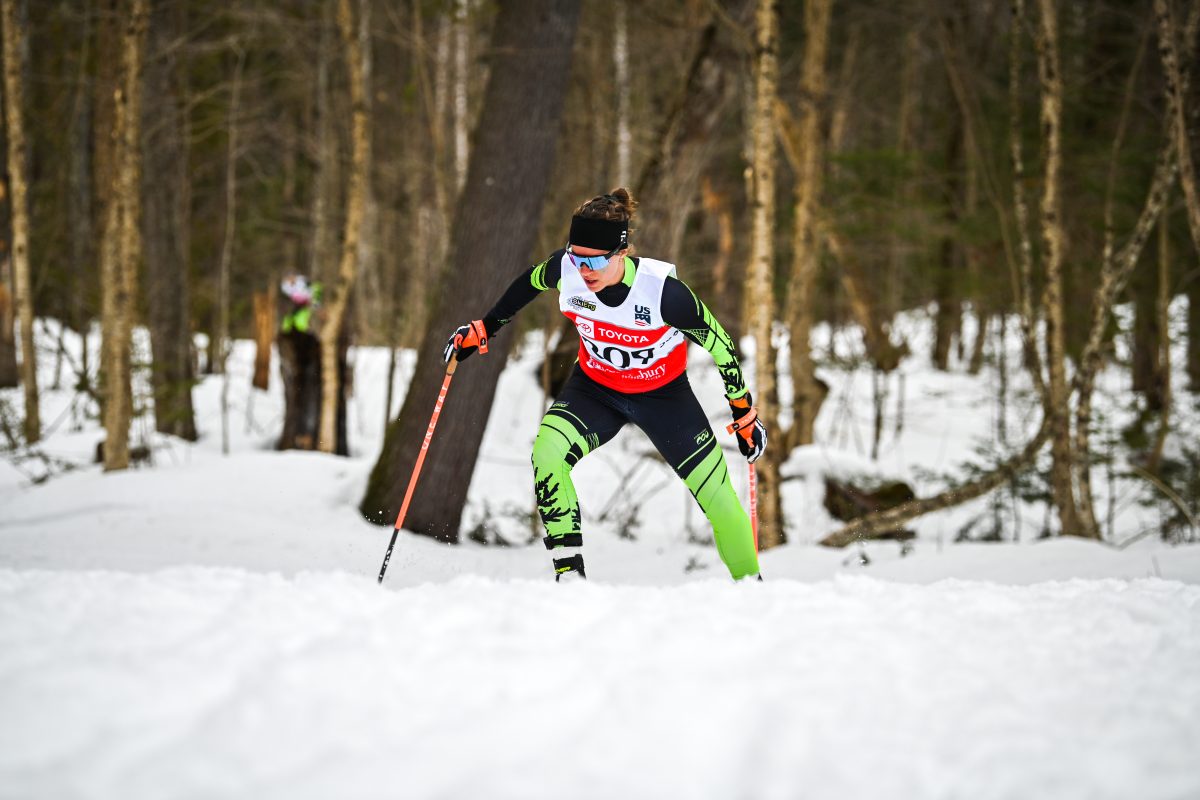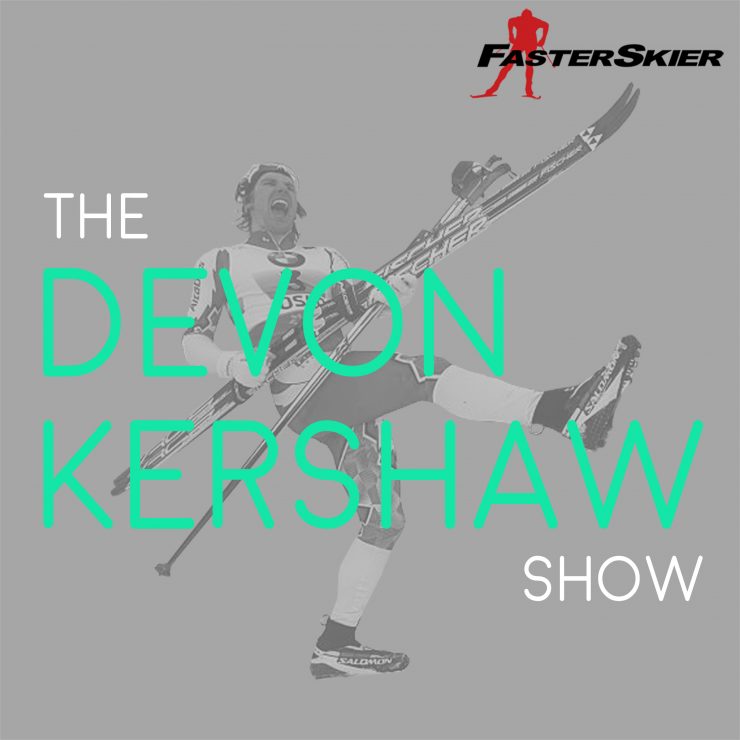
The Plan
Posted by Zach Caldwell on January 29th, 2009
Kris had his second doctors appointment of the day this afternoon with a vascular specialist who confirmed that he had no arterial blockages and quite normal circulation. This doc made it clear that the compartment pressure that was measured in his shins earlier in the day could not be caused by obstructed arterial blood flow under any circumstances. This appears to rule out the really insidious and nasty possibilities that were lingering out there.
It’s not official – we haven’t even had a chance to talk to Pete, who’s currently in Russia – but it’s very likely that Kris will schedule surgery immediately following World Championships. The only stand-alone classic race on the calendar after Worlds is the 50K in Trondheim two weeks later. After that Kris could hang around to race US Distance Nationals up in Fairbanks. But at that point he’s looking at giving away a month of Summer training. He’s eager to put this behind him.
So – the plan as it sits now: Race Craftsbury Marathon on the weekend. Fly to Europe next week. Race World Cup 15K classic in Italy. Race World Championships (15K, 4X10, and Sprint Relay depending on team selection, and very big maybe test the legs skating in the pursuit). Come home, get cut, sit around, start double-poling.
Compartment Syndrome
Posted by Zach Caldwell on January 28th, 2009
It’s amazing how quickly you get comfortable with a theory. After the Whistler World Cups both Kris and I were convinced that he had Compartment Syndrome. Subsequent visits and conversations with really excellent PTs indicated that is was not, in fact, CS, and that it was some sort of inflammation. This was a little bit hard to get accustomed to at first, but we both got pretty comfortable with that understanding of things. However, Kris went ahead and scheduled a pressure test with the Doc who performed his original CS surgery eight years ago, mostly because it was local and easy to do.
It was quite a surprise this morning when he failed the pressure test decisively. It’s worth noting that this pressure test was conducted on snow, while he was skiing, using the same tester that was used on him eight years ago. It’s entirely plausible that he wouldn’t show signs of CS with a running test on a treadmill. His condition is exacerbated by skiing, and particularly by skating. Running doesn’t do it. So, whether or not he has a “classic” case of CS, he’s measuring pressure values as high as he had prior to his first surgery. And that’s after 20 minutes of skating in which he felt pretty good – nowhere near the kind of suffering her experienced in Whistler.
There are many questions to be answered. Kris is currently in his second doctors appointment of the day, with a vascular specialist. More information will follow. However, the plan for the near future remains very much the same. Ski Craftsbury this weekend. Travel to Europe. Race in Italy and at World Championships. After that it’s all up in the air. Many decisions to be made.
What the heck is going on?
Posted by Zach Caldwell on January 25th, 2009
You might well ask – we haven’t exactly been up to date with the updates lately. The long and short of it is that Kris had a bitterly disappointing couple of days at the Whistler World Cup after a nearly perfectly executed training period at home. There must be a story behind this.
The story is that Kris has been having some problems with his legs in skating, and it got really bad in Whistler. But I should back up.
Period one ended with no disasters. The final race in Davos wasn’t stellar, but it was roughly on-par with his other performances from Period 1. He went through 8K in 10th place – just like in Kuusamo, and then he faded. This time he faded while taking a ride on some very fast but maybe a bit hard to kick skis, and as he got tired he had more and more difficulty with his skis. Anyway, by his own assessment, the 29th place in Davos was a pretty similar effort to the Kuusamo race. Not nearly enough to hang his hat on.
But that was OK – there was a plan. Kris came come healthy and started training. He trained hard for a week, felt good, took a bit of a break for family Christmas obligations, and did another block. During these weeks he did some intensity aimed at stretching his high-end capacity, but the focus was more on volume and stability. He went to Nationals very fit, but not expecting to be fresh as a daisy. Nationals was frustrating for everybody involved. There was a lot of sitting around waiting for races that didn’t happen. But when he did get a chance to race, Kris felt good. He won the skate race impressively, and cruised through the classic sprint to win that as well. He felt that the intensity sessions back home had given him an extra gear or two. Good thing – that would be necessary.
The plan had been for Nationals to be a stressful training period with three hard race efforts. It turned into a stressful waiting period with two hard race efforts. Who knows what the difference between those might be, but it was apparent in Whistler that the entire US group was well off their game. It’s reasonable to guess that sitting around for a week at -26C waiting for race starts isn’t the best recipe for great race fitness. Anyway, Kris came through healthy and extremely eager to race. He arrived in Whistler six days before his first race, ready for whatever came.
On Monday before the races we ran a pursuit workout on the race trails. 7.5X7.5 – two laps of each 3.75K race course. Leif Zimmerman and Brayton Osgood jumped in, along with a bunch of the CVTC athletes that my wife coaches. We had some of these guys take shortcuts in order to keep the head to head action intact. Kris looked excellent in the classic – it’s hard to know how much time he put on the rest of the guys because of the shortcuts involved, but it had to be a minute and a half or more. In the skating he looked bad. He was still moving faster than the others, but not by nearly as much. And he looked stiff. Wooden. Amy and Erik, the CVTC coaches shot some video, and they asked me what was wrong with him. “Oh – nothing – probably just a little flat from travel.” But I had seen it too.
That was Kris’s first pursuit workout of the snow season. Alpina had shipped over a new pair of cuffless pursuit boots with the Solvenian team, but they hadn’t arrived yet. Kris had been skating on cuffless boots for several weeks with really good sensations. In any case, he used his pursuit boots from last year which had been a really good pair for him. But on Monday they didn’t cut it. Kris felt that going back to a cuff had completely destroyed his legs – he felt like he looked, clutzy and wooden. He knew he was giving away huge chunks of time, and he wasn’t satisfied with it. He swore he’d never again race in boots with a cuff on them.
Fortunately the new cuffless pursuit boots arrived a day or two later, in time for a shorter speed-based light intensity session on Thursday. He looked great in that session. We focused on short sections of the last 1.5K or so of the pursuit course. Kris got some good tactical insights, and picked up a healthy respect for the difficulty of this “easy” skate course. It may not have the most vertical of any course in the world, but there’s nowhere to hide, and a lot of technical and transitional skiing.
Friday Kris felt like “a caged animal”. Perfect. He only skied around for long enough to test some skis and get his blood moving. His energy was running very high. I was feeling confident. Beyond optimistic. Pete and I had talked with Kris about tactics in this race, and urged him to race like a winner – show himself at the front – test the pack, etc. We could all taste it.
Saturday started well enough. Kris looked and felt good in the classic. He seemed to lose contact on a couple of downhill sections, but he was skiing positive and at the front of the group for the first 10K. He did test the pack a bit during that time, and while he felt good, and felt that he could probably win the first 15K, he also had respect for the second 15K, and it seemed clear that he wasn’t going to ski away from the field. So for the last 5 of the classic he intentionally sat in the lead pack, content to leave the efforts for the skate leg.
And then it was over. Kris lost contact with the group on the first major climb out of the stadium. He lost two minutes and 50 seconds in 15K of skating. He had the fourth skate split among the American guys – the same guys he had beaten by nearly a minute in a 24 minute race a week earlier in Anchorage. He was beaten by seven Canadians, five of whom had come off the back of the pack in the classic leg. Being in the points and the top American is no consolation under these circumstances. Any way you measure it that skate leg was an utter collapse.
You can’t fake fitness for 15K of a classic race. It must be physiologically impossible to die hard enough to lose as much time as Kris lost. We were all totally confused. Training had gone perfectly. OK – Nationals was a bit of a cluster, but nothing could explain the wheels coming off that badly. We talked and I wasn’t helpful. I could offer no explanation, and very little consolation. All Kris could do was go and take out his anger in the sprint relay the next day.
And that’s when it all started to come together. In the first lap of the sprint relay I saw Kris looking stiff and giving away spots on the descents. He came in feeling good – hardly out of breath. The pace had been slow. No problems. By the second lap he was toast. He looked fine going up the first hill, but he could barely move his legs on the downhills, and on the fast flats in the stadium it was impossible for him to climb on top of his ski. He looked like I feel when I’m skating with any amount of lactate in my legs. I’ve got compartment syndrome. Bad news for Kris.
We went skiing after the sprint relay semifinal. It took a while, but we started putting together the pieces of the puzzle. Kris had compartment syndrome surgery in 2001. This didn’t feel exactly like the same thing, but it sure felt similar. In Muonio, in the first skate race of the season his legs felt wrong. He chalked it up to lack of on-snow time. He’s never needed more than a couple of hours to adapt to skating on snow. Things were a little better in Gaellivare, but not perfect. In France, trudging through deep snow, he felt terrible. The only really good feeling skate race he’s had this year was at Nationals. And then there was Whistler. Kris has been struggling to find a comfortable position on skis all year. Alpina has built him a handful of pairs of custom boots. The boots that were great last year are intolerable this year.
In the past week Kris has spoken with Andy Fecteau and has spent three hours with Kurt Jepson. These are some of the best physical therapists available, and they are convinced that Kris has not had a recurrence of CS. Instead they feel that he has got some form of musculotendinous inflammation causing the condition. Kris also saw the doctor who did his surgery eight years ago, and while this doc thinks it is unlikely that this is a return of CS, he’s scheduled to have a pressure test done on Wednesday.
CS or inflammation – the short-term prognosis is the same. No skating. Upon review this year has marked a major departure from the type of training Kris has done since 2001, with a whole lot more skating. Skating was a weakness last year, and so he’s focused on it this year. He seems to have given himself some sort of over-use injury. So for the time being Kris is only classic skiing. Given the intermittent nature of the condition it’s reasonable to expect that Kris can enjoy some further success in skate races this season. As of now he’ll race the 15K classic in Italy prior to Worlds, and then the 15K classic at Worlds as his next two major races. Then he’ll strap on his skate skis in the pursuit at Worlds for his first test of his rested legs. Until then, the next news will come Wednesay when the pressure test should rule out CS.
Given Kris’s diabetes it’s natural to wonder whether his current difficulties might have something to do with his diabetes and the known issue of loss of circulation in the lower extremities among diabetics. Wikipedia names Intermittent Claudication (muscle pain, ache, carmp, numbness, sense of fatigue) as a diabetes-related condition. It’s tempting to attribute some of this to diabetes, under the circumstances. But it’s important to realize that the circulatory issues related to diabetes tend to arise in response to chronic hyperglycemia. I doubt there is a diabetic in the world with better blood sugar control that Kris. He is definitely not chronically hyperglycemic, and even the rare in-race hyperglycemic episode that causes such grief occurs at glucose levels far below what is generally noted as dangerous to the health of the diabetic.
That’s the long story. Kris’s overall health and fitness is excellent. There is plenty of reason for optimism. An episode like this always shakes one’s confidence, and I’d be lying to say that I’m not worried. But there have been no errors in preparation this year. Kris’s execution of the plan has been flawless, and even if the plan isn’t perfect, it will yield its share of successes. The hard work for Kris now is to bring his mind-set around to reflect the confidence that he’s earned. It’s coming…



